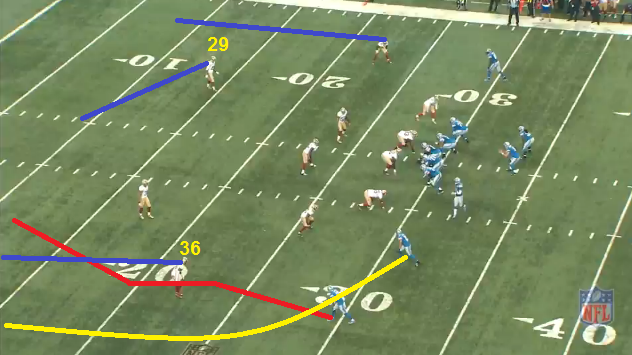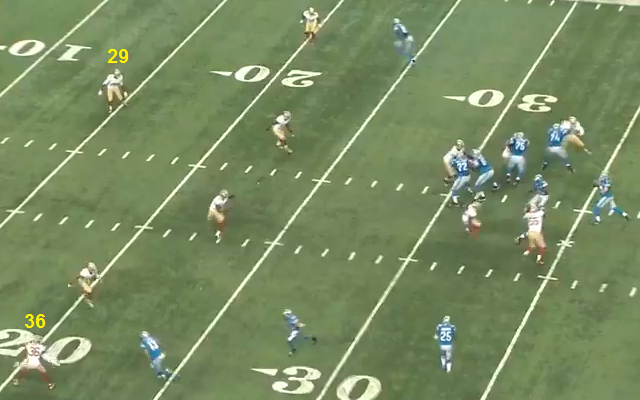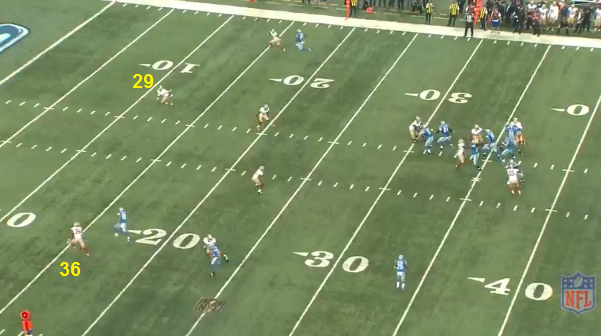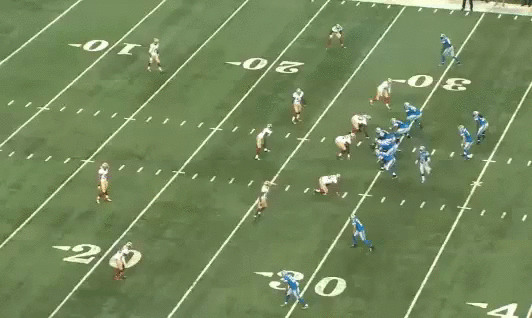This is about Outside Zone and the term "cutback" that is often times used to describe an outcome of an Outside Zone running play. We may hear this term many times, as long as Kyle Shanahan is head coach, when a 49er running back knifes upfield for yardage. But after reading this, you'll know why it's not a cutback. To show why the term cutback is even used, let's first contrast two run blocking schemes - Power/Gap blocking and Outside Zone. It will help to know how the defenders assigned to their run fit are stressed in a power blocking concept.
This is the Power play, one of the most ground and pound football plays. On this particular play, the designated gap to attack is the C gap.
Red is the force defender. His job on a run play is to make sure the RB does not get outside of him. Usually this is the 'end man on the line of scrimmage' (EMOLS).
Green is the playside defensive tackle, lined up adjacent to the gap that the RB will run through.
Orange is the defender assigned to the C gap. The gap that the RB is to run through.
Throughout these cutups, it will be important to note where the gaps are located on the field. Use the hash marks as landmarks to approximate where the gaps are located. On this play, note the location of the C gap. It aligns with the eyebrow of the bird logo.
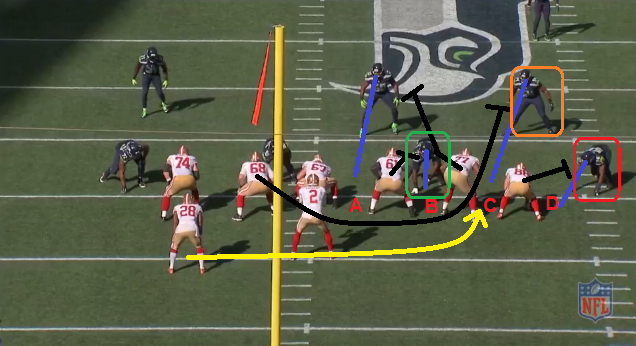
Kickout block on the force defender. Double team the playside DT to move him away from the C gap.
Defender assigned to the C gap (orange) needs to read this and come up to fill. Meet the lead blocker in the hole.
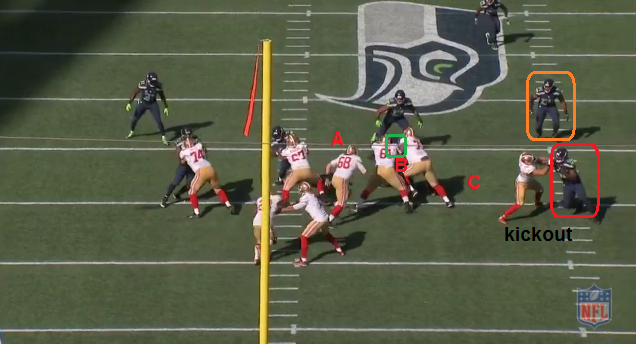
Backside Guard leads through to block the defender assigned to the C gap. RB follows through. Notice how the C gap has not moved much from when the play started.

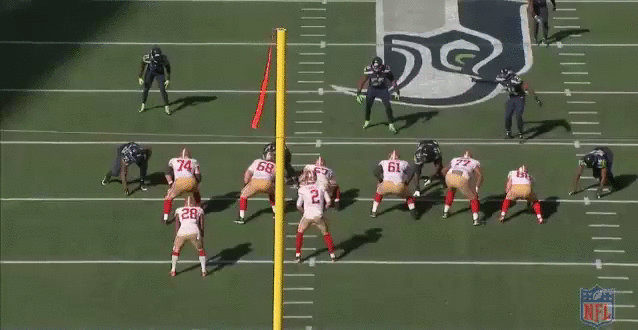
Another Power blocking concept is the Counter play. Same idea like the Power play, but ran to the weakside of the formation. Same color designations as above.
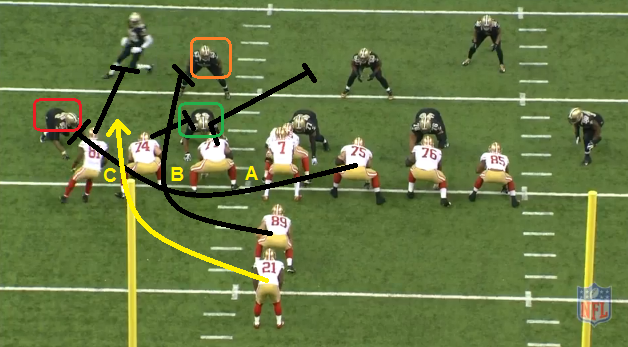
Double team the playside defensive tackle.
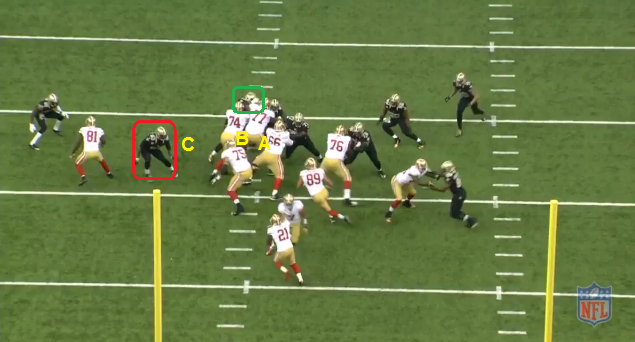
Kickout block the force defender. Lead block the defender assigned to the C gap (orange).
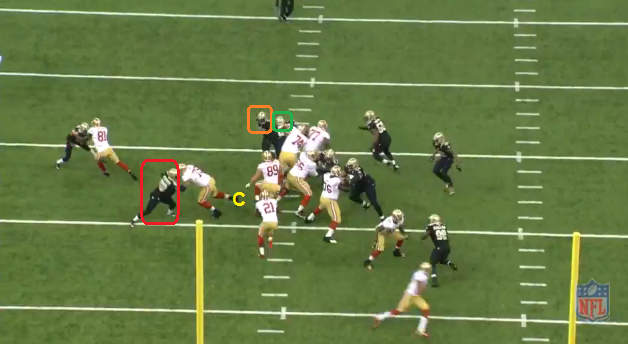

On both these examples of Power/Gap blocking concepts, the idea is to use force to move the defenders near the point of attack, away from the point of attack. To defend against these power blocking concepts, it require the defenders to hold their ground against the OL's drive blocking, or read the play and fill the gap they are assigned to.
Another Power blocking concept is the Trap play. The objective remains the same, get defenders away from the point of attack. The Trap play takes advantage of a defender that tries to get upfield by using his own movement to remove himself from the area that the RB will attack. Below, the 3tech will be trap blocked. The designated hole for the RB will be at the left side A gap.
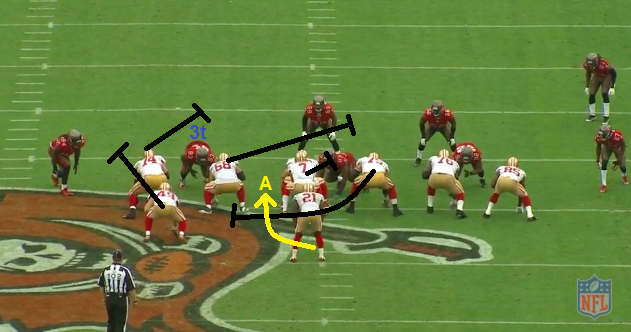
Allow the 3t to move upfield by not blocking him with either of the offensive linemen (LT, LG) lined up across from him.

The A gap has not moved much from when the play began.
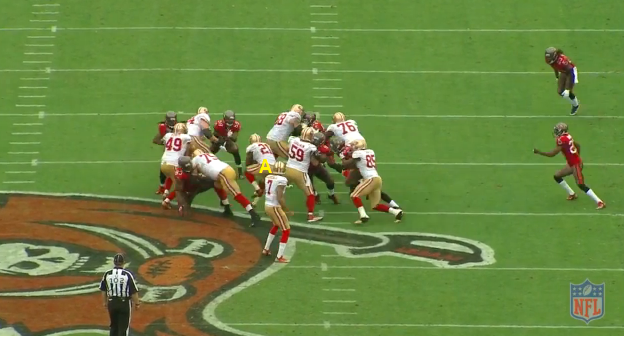
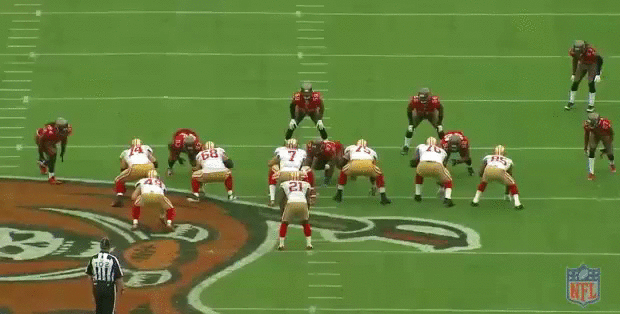
The idea of this Power blocking concept, again, is to account for each defender at the point of attack to create a hole for the RB. Power, Counter, and Trap plays all stress the defense by forcing each box defender to hold their ground in order to defend the gap they were assigned to.
Outside Zone (OZ)
Kyle Shanahan will be bringing (back) the Outside Zone scheme. This is a scheme that originated before the modern age of football. But it was Alex Gibbs that helped this concept become as popular as it is in today's game. Gibbs said, "I went to a couple of other jobs and they did not want to make this system the feature play. Finally, I went to Denver with a friend who wanted me to put in that system." That friend was Mike Shanahan.
The object on every OZ play is to bounce the run outside the edge. This is why Gibbs says, "We coach the running back to take what the defense gives and
read the defenders from the outside to the inside". On the third step, the running back is either going downhill or taking the ball outside. The reason the decision is made on the third step is the timing of the blocks within the offensive line. On the third step, the runner has to make a decision."
Red is the EMOLS and is the first read for the RB. Notice the gaps and their location with respect to the hash marks.
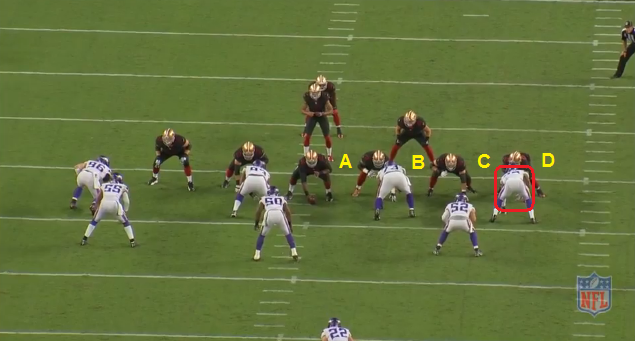
Although it can vary, coaches will often tell the RB to read the defenders' helmets. If the blocker has his helmet on the outside earhole of the defender, that defender is pinned to the inside, provided the blocker can execute the reach block. Can't go anywhere without your head. Red will have to shed in order to get his helmet to the outside.
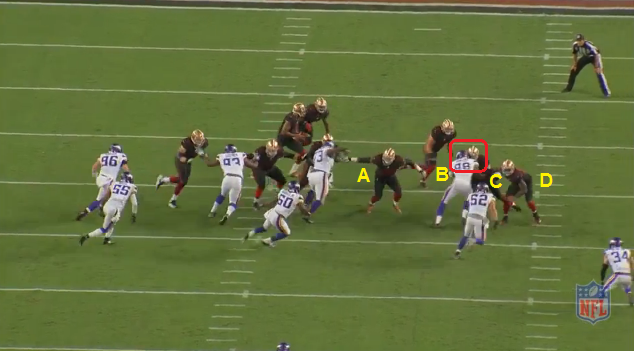
The blocker (left tackle) reach blocks and seals the edge. This tells the RB to bounce it outside.
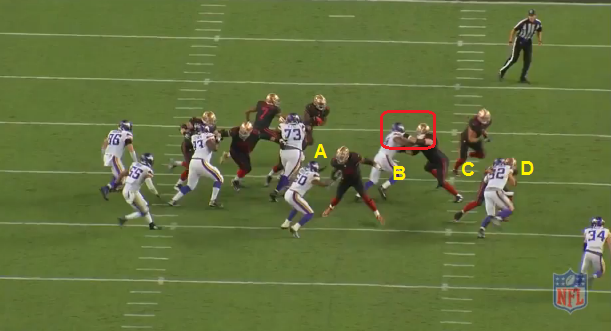
This is the object of every OZ play - bounce it outside.
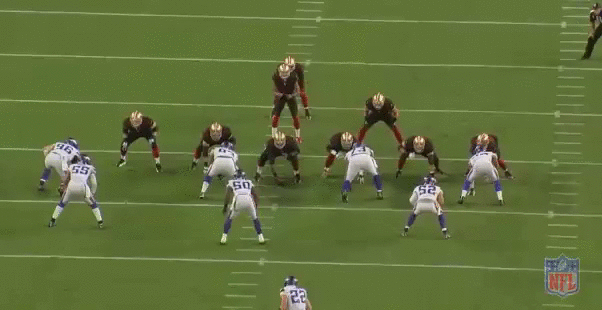
Being able to bounce outside will put the fear into the defense of getting beaten to the outside and will set up the "Cutback" run.
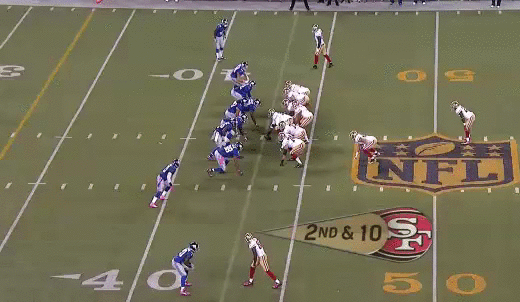
But it's not a cutback says Gibbs: "There is not a cutback theory. The cutback is geared off the aiming spot of what is happening (with the offensive line)."
Kyle Shanahan had this to say about the cutback: "Everyone says, the 'cutback', I look at it more as just getting downhill. Because the more you can make a defense play sideways, you just get downhill and it looks like you cutback, but it's because everyone's scared you're running outside. And so they go sideways and you get downhill, but it's behind the backside tackle."
This is the OZ play from the gif above. The aiming point is the Tight End. Can that TE seal the edge? Due to the positioning of the force defender (D gap defender), it's a tough reach block to make.

Notice the backside C gap (yellow) defender.
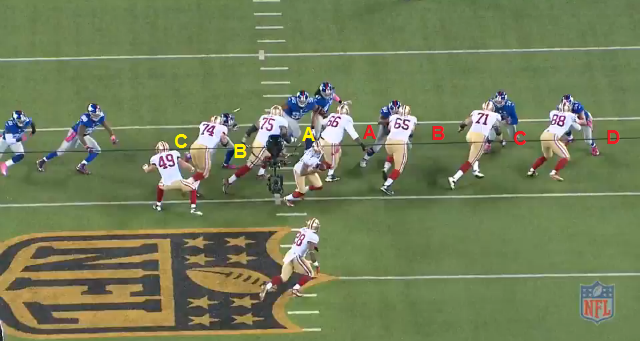
Can't seal the edge. Notice how much every gap has moved laterally from the start of the play. The defenders must follow the gap they were assigned to defend. The playside force defender (D gap) is now near the top of the numbers. That means the C gap defender next to him has to move as well, and so on. All the defenders have to keep their relationship, spacing wise, with the adjacent defender in order to keep the gaps tight.
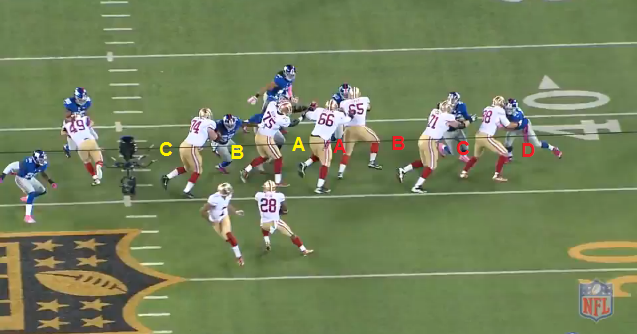
The majority of the defensive line forms a wall and flows together, except for one guy - the backside C gap defender. He's now behind the play and blocked. The RB heads straight downhill, behind the backside tackle.
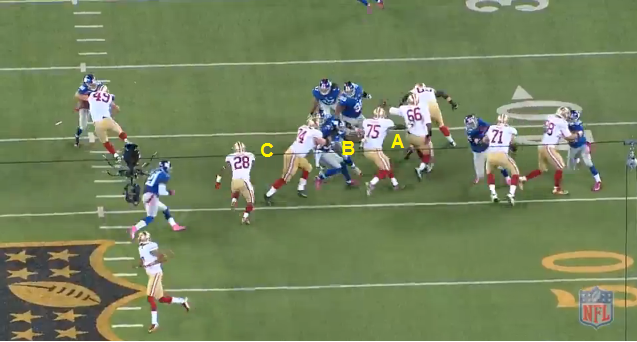
It's not until he passes the LoS that he cuts left across the field. Everything before and just past the LoS was downhill.
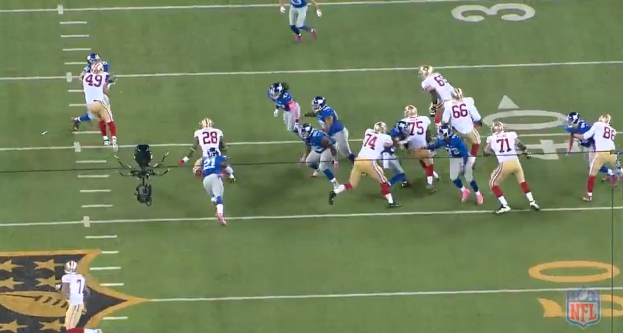
The RB starts off reading the TE aiming at the playside D gap. He ends up running through the backside C gap, which has moved nearly 8 yards since the start of the play.
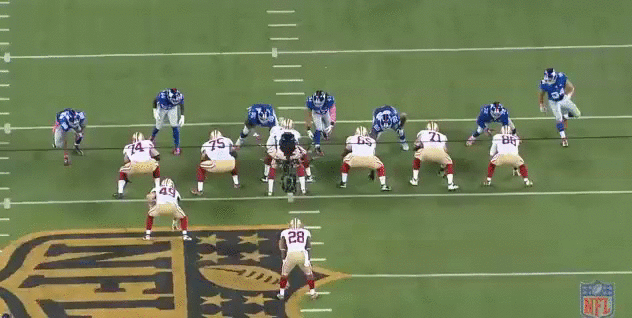
The manner in which a defense is stressed trying to defend OZ is completely different than Power concepts. Defenders can't hold their ground against OZ because every gap is moving towards the sideline. The ball isn't going to come back to them if they hold their ground. They are forced to follow along.
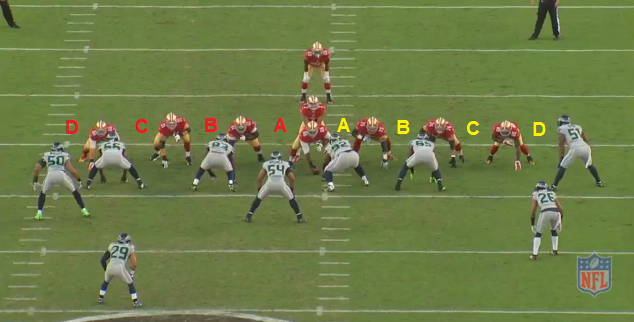
Shifting the location of the gaps forces each defender to keep the same space and distance with their fellow team mate. If they hold their ground, they would abandon their gap.
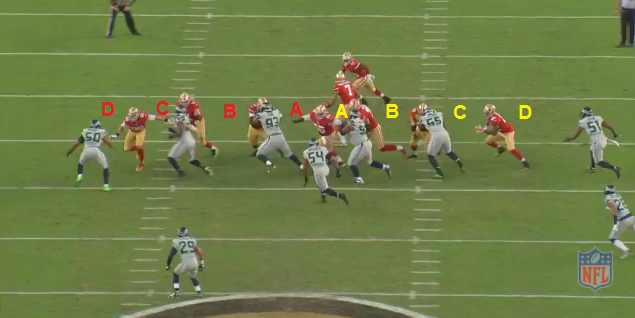
The force defender (red D gap) forces contain and the RB can't bounce outside. The read is outside to inside. Look for two friendly helmets to be next to each other. A defender can't go anywhere without his helmet. The B gap is the correct read.
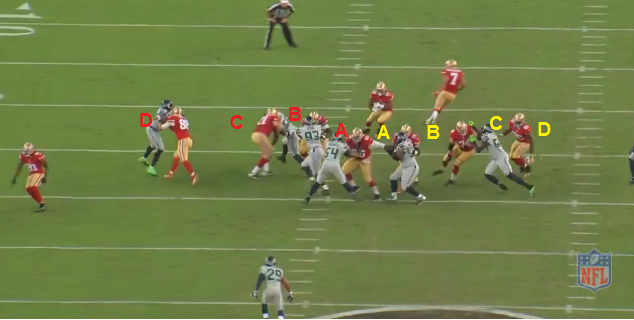
There is no cutback. The RB plants and heads downhill.
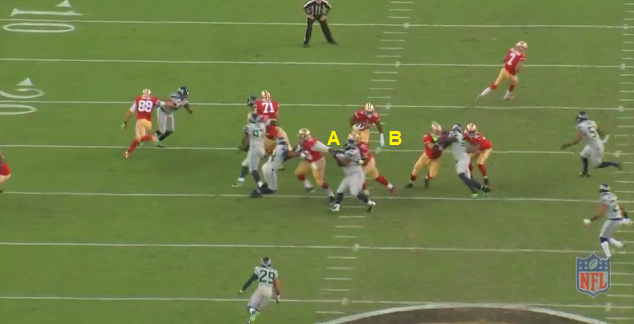
Make a read by the third step, another 2 steps to turn the body, explode downhill. No shake and bake, no jukes. Live with the decision.
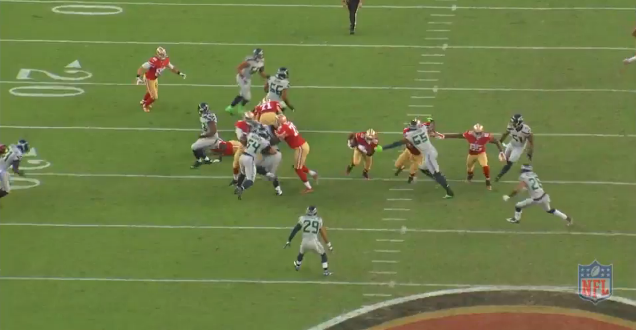
The RB begins the play by running towards the playside, but ends up going through the backside B gap, while never cutting back.
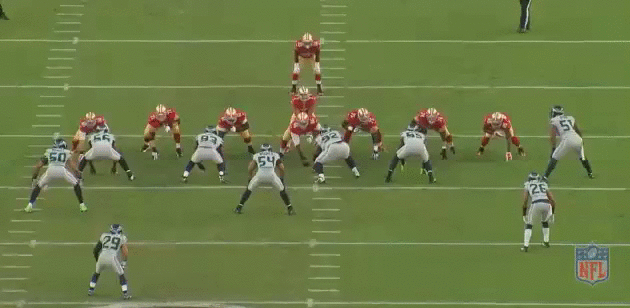
Now this is a cutback.
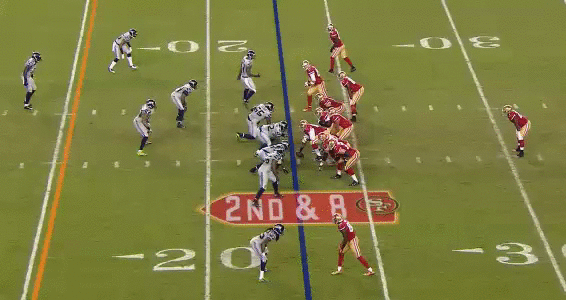
"Nice cutback run there by the 49ers running back." Hopefully we hear that a lot on Sundays. Let the announcers talk about the cutback when the 49ers run OZ. We know what is really happening. It's all downhill.
